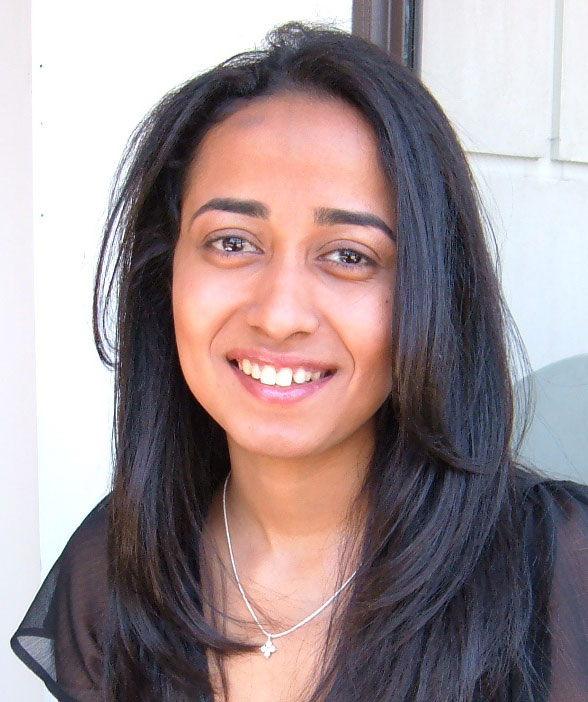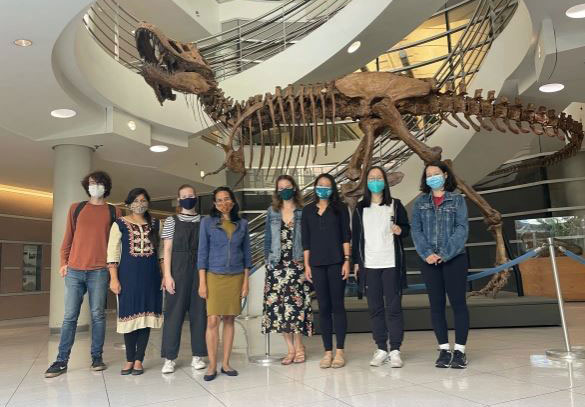
Faculty Research Spotlight | Priya Moorjani
In the Light of Diversity
By Kirsten Mickelwait

For several decades, DNA analysis has been commercially available to the general public, enabling us to track our ancestry, learn about family traits, and predict disease. But at the scientific research level, this technology is answering much deeper questions, and going back much farther in time.
Priya Moorjani — an assistant professor of genetics, genomics, and development — uses genetic data from ancient and present-day individuals to answer evolutionary questions in human populations. Her lab investigates questions like where people come from, how they relate to each other and when different evolutionary events — like natural selection or gene flow — occurred. The team then uses that information to find disease genes or signals of selection and adaptation in humans. They also study how mutation rates vary and evolve over time across populations and species.
Moorjani’s lab investigates human history from decades to millennia. They examine de novo mutations that occur in one generation. At the same time, they compare population relationships across ancient and contemporary humans to those that occurred thousands of years ago between modern humans and Neanderthals. And finally, they investigate differences in humans and non-human primates that occurred more than ten millennia ago.
In recent work, the Moorjani lab has used ancient samples from Neanderthals and modern humans to characterize the legacy of population mixtures in humans. By developing new computational methods, they’ve shown that modern humans and Neanderthals mixed with each other ~50,000 years ago. More recently, using ancient DNA from Europe and South Asia, they were able to map striking parallels in the spread of Neolithic farmer and Steppe pastoralist ancestry to both subcontinents.
While Moorjani’s lab is focused on basic science questions, possible translational applications exist in identifying and mapping disease drug targets. The lab is conducting a large study of Alzheimer’s disease in South Asia, for example, where it’s generating 3,000 whole genome sequences of that region’s current population.

Population history is a very important lens through which we can look at disease variation,” Moorjani says, “because what evolutionary events have occurred in the past can inform what the frequencies of different mutations might be in the genome, what disease-related variants might be present, and what is the impact of adaptive variants.”
Theodosius Dobzhansky, widely regarded as the founder of evolutionary genetics, is often credited with saying that “Nothing in biology makes sense except in the light of evolution.” Moorjani builds on that idea: “We can also say that nothing in genetics makes sense except in the light of diversity.” Previous human genetic initiatives have been extremely biased, she says, with more than 80 percent of disease-mapping studies based on a single population of Europeans.
More diverse populations, including many of mixed ancestry, have more complex genomic structures. They've often been excluded from genomic surveys because methods were only recently developed to analyze more diverse populations. This has left an enormous gap in understanding the genetic architecture of diseases. Now a major focus of the Moorjani Lab has been to develop methods that can help to expand human genetic studies to other diverse populations, particularly those with mixed ancestry, such as many African and South Asian populations.

After earning her bachelor’s degree in computer engineering and her master's in bioinformatics and genomics, Moorjani balked at becoming a programmer for a big tech firm. “The human genome had just been sequenced, and the most exciting questions seemed to be in biology,” she recalls. She took a gap year and began exploring research questions in genomics. When she serendipitously attended a talk on genetic admixtures, she felt an instant fascination and has never looked back.
Since coming to Berkeley in 2018, Moorjani has relished its research talent in evolutionary biology and population genetics, as well as the strong focus on teaching. “Having a joint appointment [between the Molecular and Cell Biology and the Center for Computational Biology] allows me to take advantage of this rich community and create the best environment for the students in my lab,” she says. “It’s helped me broaden my own perspective, while also asking deeper and more interesting questions.”
Learn more about research in the Moorjani Lab at: https://moorjanilab.org/ or follow Priya Moorjani on Twitter @moorjani_priya.
Back to Main Spring 2022 Newsletter Page
| Connect With Us! | ||||
MCB Twitter |
 LinkedIn Postdocs, PhDs, or Undergrads |
 Cal Alumni Network |
 Give to MCB |
|
